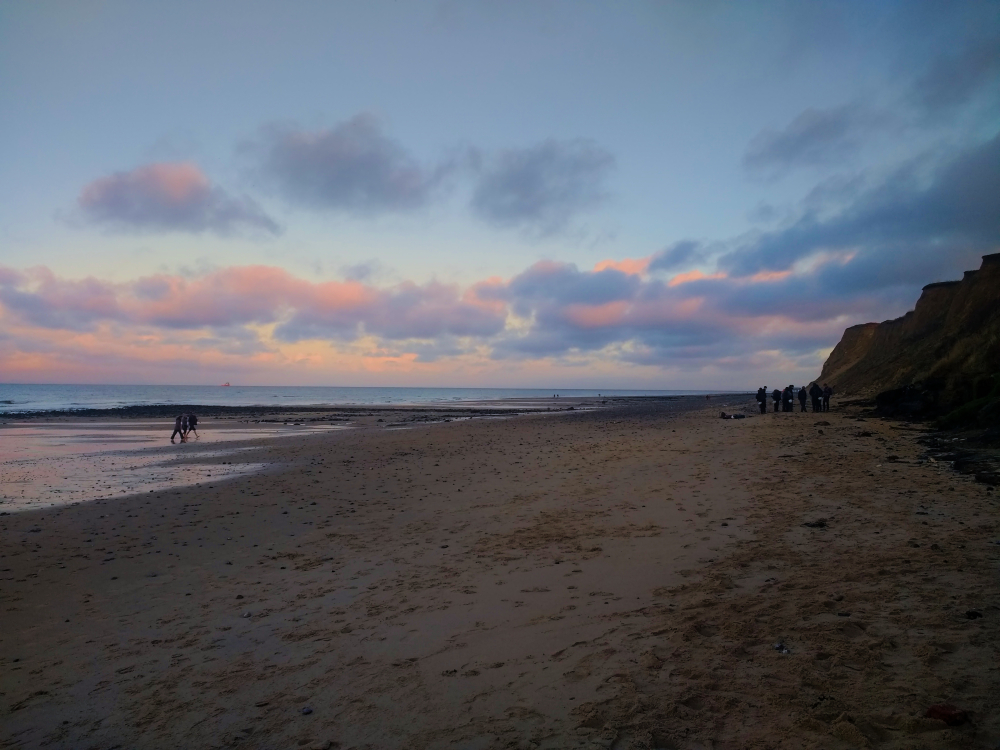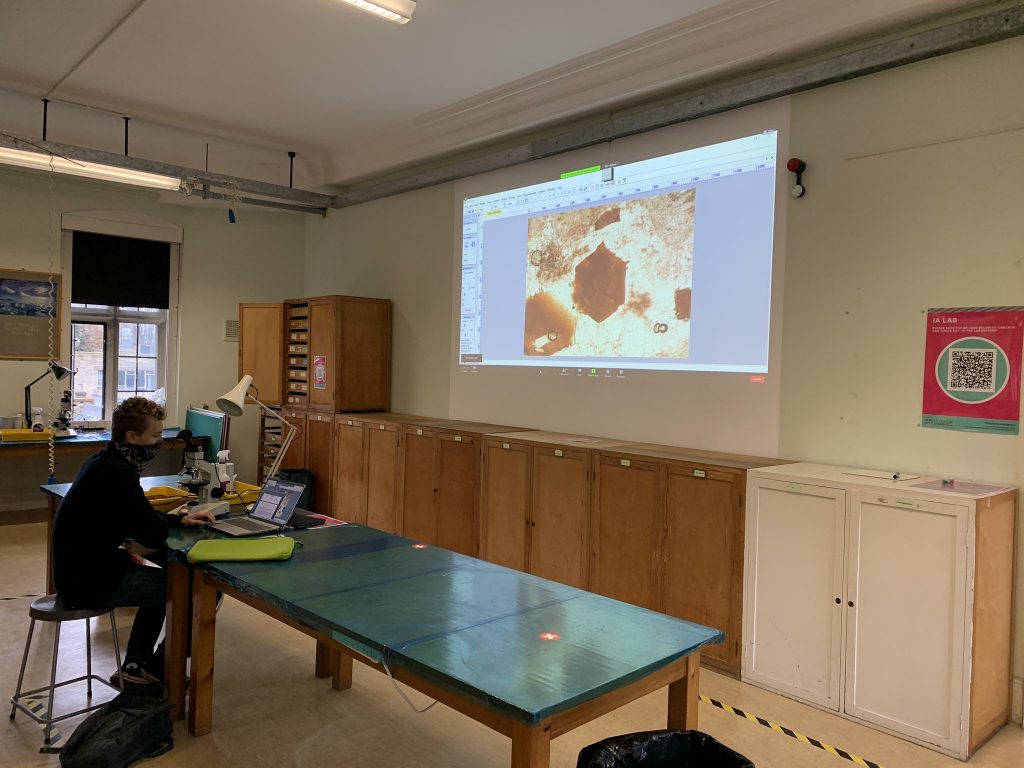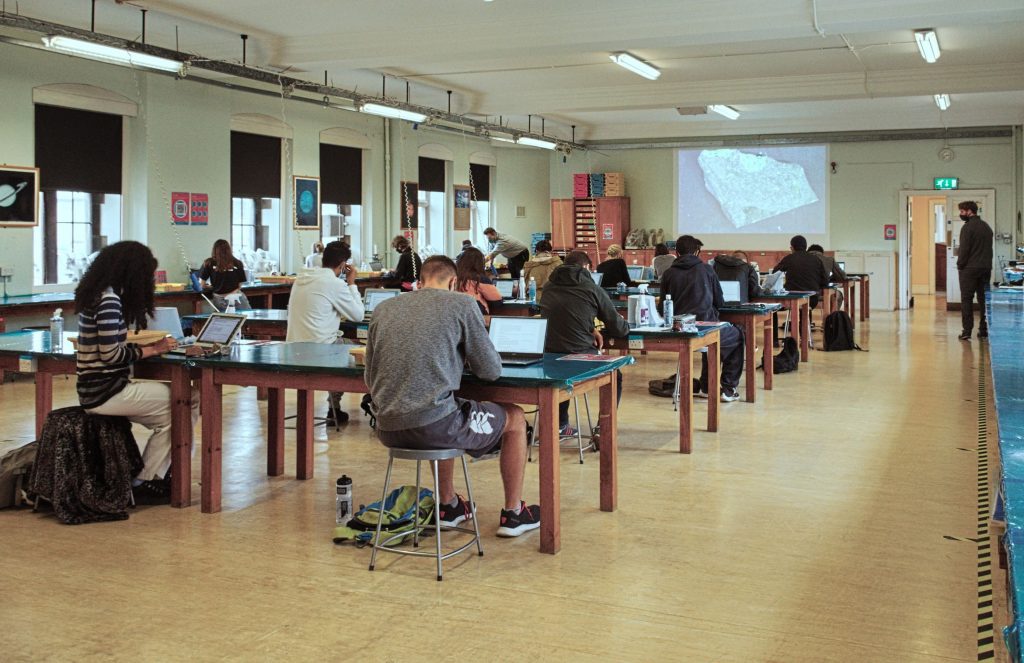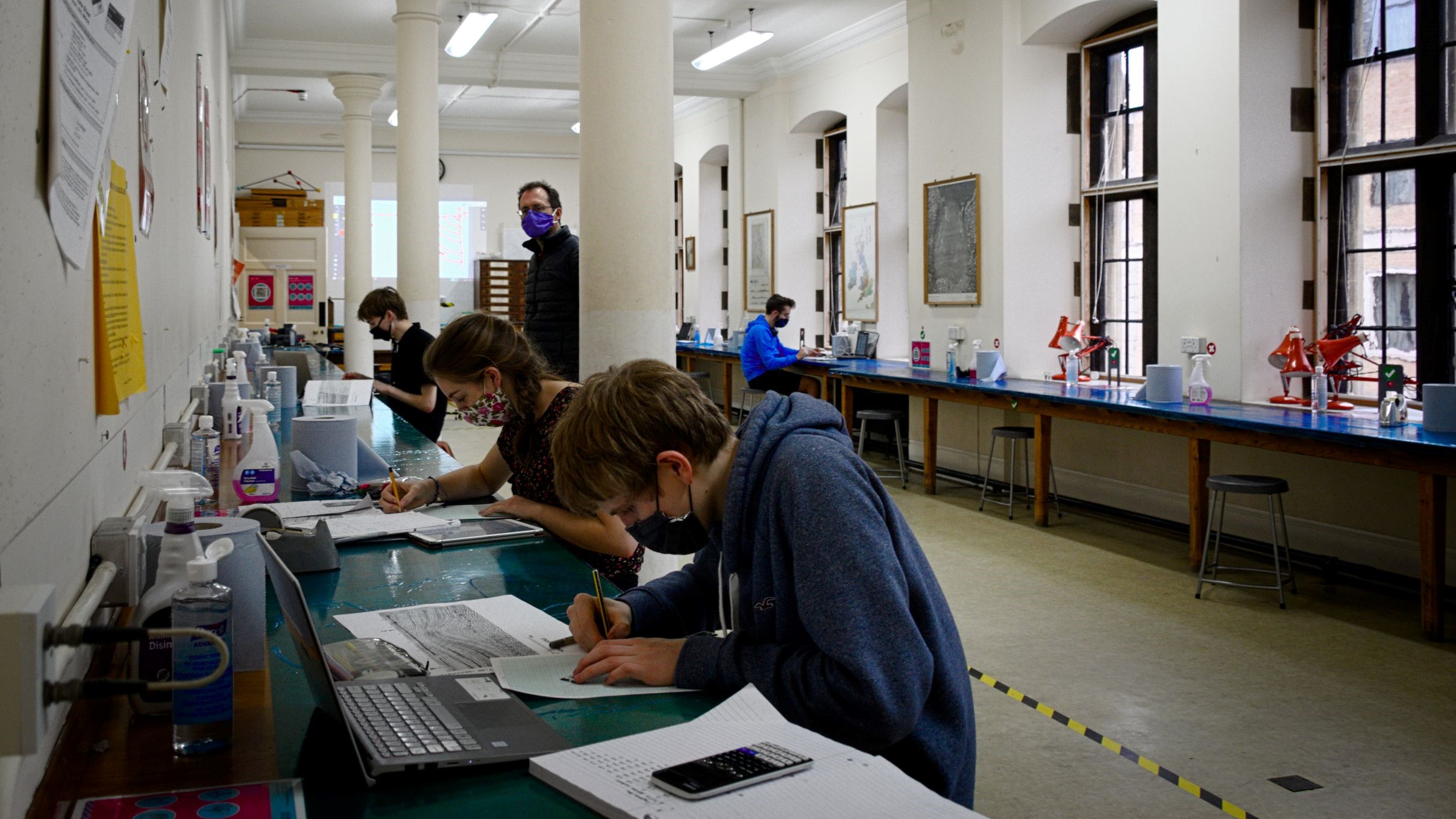For the first time in 47 years, I’m not doing any teaching in this academic year. But, having been Director of Teaching for over half that time, I’m still programmed to worry about how teaching is going in the Department, especially in this strange year of all years. So I asked a selection of students and teaching staff for their perspective. The replies I had were almost entirely positive…
The Department’s Director of Teaching, Nick Butterfield, is satisfied with how the term has gone. “Despite the pandemic, Earth Sciences has managed to carry on with all of its Cambridge-based teaching this term. We’re particularly proud of what we’ve achieved in terms of practical sessions: every one of them, from IA through to Part III, is being presented in person. Our students are still coming into the Department (in a COVID-safe fashion) and still getting that interactive hands-on experience that is so fundamental to what we teach”.
Part III student, Yvan Bollet Quivogne enjoyed both lectures and practicals.“Lectures have felt like a return to normality with rapid fire facts from James Jackson unfiltered by his mask! The precautions being taken and the regular cleaning of surfaces when entering and leaving lecture halls has been a great reminder for everyone to remain vigilant…The group question sessions work well as they are closer to a large supervision than a guided practical. It does get pretty cold with the windows open though!”
Fourth year projects have been possible, though typically in a reduced form. “I was sad not to be able to get access to the labs at BAS for my project but I’d already made plans ahead of time with my project supervisor to pursue an alternative project…. I’ve been happily coding away and exploring the joys of MATLAB and have had regular access to my project supervisors through Zoom meetings,” said Yvan.
Amber Parsons, from the Part II class, echoed Yvan’s appreciation of the revised teaching methods. “Being a smaller year group we’ve been lucky to continue in-person teaching, with an online option in case it’s needed (e.g. if isolating or vulnerable). I’ve definitely benefited from having the structure and reason to leave my house each day! Practicals are a bit different to normal, with discussion between students harder as we’re all spread out. Overall, the teaching itself has remained fairly similar for us, just involving a lot more distancing, masks and sanitiser”.
It’s the Part II class who have been hit hardest by the loss of field work. Nick Butterfield said, “All of our field trips and Part II mapping projects for 2020 have had to be cancelled. But we’ve managed to pull a few rabbits out of the hat, not least some excellent Part II day-trips – to Leicestershire, Suffolk, Norfolk and Sussex”.
Amber said, “There has been quite a shake-up of the project work side of the course, having missed about nine weeks of field work since Easter, including our summer mapping projects. Instead there’s been some newly devised independent work… made up of a literature review and data-based projects. The Department has also put on several field day trips which have been a fun way to have some (socially distanced) normality back, despite often involving the rain that our year group is used to. The social side of the course has seen the largest impact, with access to the library, Sedgwick Club socials, and in-person seminars and career events restricted”.

Even IB lectures have been delivered in person. IB student Ellie Austin said, “I actually feel quite lucky doing Earth Sciences this year given the Department’s commitment to in-person teaching, which really helped make this term feel a lot more normal. I’ve got so used to seeing everyone wearing masks all the time that I honestly can’t recognise my practical partners without them anymore”.
Ellie said, “I think everyone’s got the hang of online supervisions though by now, and they’re not that different from usual, bar the occasional 20 minute Wi-Fi blackouts and laptops running out of charge mid-way through”.
IA teaching has been most impacted by the new arrangements, with all lectures moving online. IA course organiser Ed Tipper explains that even this move has had some benefits. “We’ve made some significant technological improvements and taken the opportunity to rejuvenate the course. The online lectures mean that students can watch and replay them at their leisure, something they’ve wanted for years. All practical specimens also now have a video description by the lecturer, meaning that a student never misses the detail direct from the horse’s mouth, and that students can continue the work in isolation, or even whilst not in residence”.
Aidan Brzakalik from the IA class confirms Ed’s assessment. “Overall, my experience of the Earth Sciences teaching has been very good. Presentation of the lectures has been effective and watching recordings made specifically for this year is helpful. There are definitely benefits (e.g. the ability to pause, and fit lectures around other commitments)”.

The large IA class size of about 120 makes running first year practical classes a particular challenge. Ed Tipper said, “Aside from the education value, we felt it was a duty to find a way to work in the pandemic, by running 50% more classes in a socially distanced way with a whole suite of other precautions; there is just a sense that it may be working. All desks are two metres apart and a demonstrator can’t get closer than two metres to a student. The lab is about as cold as if you were in the field, with all the windows open and a gale blowing from the Macdonald Institute. Microscopes have been brought into the 21st century by adapting them with eye-piece cameras, meaning that demonstrator and student can, for the first time, see the same image. A revolution that would cost tens of thousands of pounds to do commercially, has been implemented successfully on a shoe string, in our own uniquely Cambridge Earth Sciences way”.
Aidan said, “I have really enjoyed going to in-person practicals this term and the immediate help from those in the room makes learning much more efficient. However, Aidan found his online supervisions worked well. “Regular supervisions are a fantastic part of the course and Cambridge as a whole. Any issues with specific concepts are usually ironed out by the end of the hour and it’s great to be able to consolidate what I’ve learned in previous weeks”.

Looking back on the term, Nick Butterfield said, “There’s been a huge effort by both academic and support staff to get us to where we are, and we’re working to keep the show on the road. Fingers crossed for the rest of the year”. Ed Tipper agrees, “This has been a monumental challenge, but one that we have viewed as an opportunity to continue to inspire and educate future generations about the wonders of the Earth, past, present and future”
Teaching staff have been impressed by the positivity of students across the four years. As Ed Tipper said of the IA cohort, “For students who missed the end of A-level or equivalent, they have arrived with just as much commitment – perhaps more than ever – to get on with the work despite challenging conditions”. Ellie Austin’s attitude is typical of all years of students: “Despite the weird idiosyncrasies of this term, it’s still been quite fun, so I’m excited to see what the rest of the year holds!”


